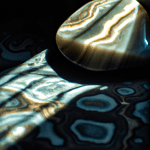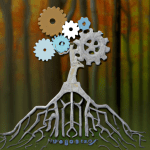Can You Get Mastitis Without Breastfeeding? Exploring the Unlikely Causes
Mastitis is a condition commonly associated with breastfeeding mothers. It occurs when the breast tissue becomes inflamed and infected. However, it is possible to develop mastitis even if you are not breastfeeding. In this article, we will explore the unlikely causes of mastitis and shed light on this lesser-known aspect of the condition.
1. Injury or Trauma
One of the possible causes of mastitis in non-breastfeeding individuals is injury or trauma to the breast. Any damage to the breast tissue, such as a bruise or a cut, can create an entry point for bacteria to enter and cause an infection. It is important to take proper care of any breast injuries to minimize the risk of developing mastitis.
2. Nipple Piercings
Nipple piercings can also increase the risk of mastitis, even if you are not breastfeeding. The piercing can introduce bacteria into the breast tissue, leading to an infection. It is crucial to maintain proper hygiene and clean the piercing regularly to reduce the chances of developing mastitis.
3. Blocked Milk Ducts
Blocked milk ducts can occur in both breastfeeding and non-breastfeeding individuals. When a milk duct becomes blocked, it can lead to inflammation and infection, resulting in mastitis. Factors such as hormonal changes, tight clothing, or excessive pressure on the breasts can contribute to blocked milk ducts. Seeking medical attention and practicing good breast hygiene can help prevent mastitis in such cases.
4. Weaning
Even after weaning, when breastfeeding is stopped, there is a possibility of developing mastitis. The abrupt cessation of breastfeeding can cause milk to accumulate in the breasts, leading to engorgement and potential infection. Gradual weaning and proper breast care during the transition can help minimize the risk of mastitis.
5. Immune System Weakness
Having a weakened immune system can make individuals more susceptible to infections, including mastitis. Conditions such as diabetes, HIV/AIDS, or undergoing chemotherapy can compromise the immune system’s ability to fight off bacteria, increasing the likelihood of developing mastitis.
Conclusion
While mastitis is commonly associated with breastfeeding, it is important to recognize that it can occur in non-breastfeeding individuals as well. Factors such as injury, nipple piercings, blocked milk ducts, weaning, and a weakened immune system can contribute to the development of mastitis. If you experience symptoms such as breast pain, redness, or fever, it is crucial to seek medical attention promptly. Remember to take proper care of your breasts and maintain good hygiene to reduce the risk of mastitis, regardless of whether you are breastfeeding or not.




